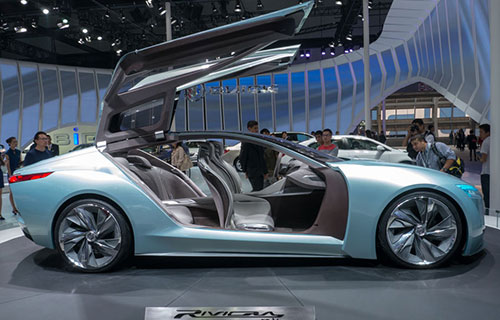

However, Huang said, the development of the megalopolis is befitting Kaifeng as it "features sharing of services and resources including telecommunications, finance, transport, industry distribution and environmental protection."
Residents and businesses in Zhengzhou and Kaifeng, which have a combined population of over 13 million, can already enjoy intra-city bank services on saving accounts, bank cards, bills and fund transfers with no cross-city charges.
A new industrial zone on the Zhengzhou-Kaifeng border has cultivated an auto parts cluster with an investment of over 12 billion yuan ($1.97 billion) from 60 enterprises including auto giants of Chery and Sumitomo.
Zhengzhou's car-manufacturing industry now sources about 90 percent of its parts from the zone, to which staff commute from both cities.
Kaifeng benefits most during the megalopolis process. According to Huang, what he calls the "dislocation development" helps magnify its strengths in historical culture, human resources and location.
Trips to Kaifeng to enjoy the local dishes and nightlife are popular with Zhengzhou residents.
In 2012, Kaifeng received 44.1 million tourists and realized tourism revenue of 18 billion yuan, year-on-year increases of 13 percent and 16 percent respectively.
Barriers to break
Aside from the Henan-centered Central Plains Economic Zone, China's vast inland region is witnessing five similar urban developments including the Changsha-Zhuzhou-Xiangtan City Group in Hunan, city circles around Wuhan of Hubei and Hefei of Anhui, as well as Guanzhong and Chengdu-Chongqing urban agglomerations.
It is hoped that the formation of these megalopolises will enhance their advantages of location, market potential, dense population, convenient transportation and high urban density.
Meanwhile, experts have noted, they suffer from the same dilemmas as the rest of China, such as imbalances between urban and rural sectors, and economic structural contradictions.
The integrated development of megalopolises will embolden central and local governments to be more courageous in breaking administrative and institutional barriers, said Geng Mingzhai, vice chairman with the Economic Association of Henan.
He suggested replacing the current designation "administrative city" with "economic cities," which would feature integrative planning on traffic and industry distribution, public services as well as environmental protection.
More importantly, the central government must shape megalopolis development with top-level design by deepening the household registration and social security system reforms, he also urged.
 Chinese flock to Korean shopping malls
Chinese flock to Korean shopping malls
 Model with modified Audi A5
Model with modified Audi A5
 Model with German luxury cars
Model with German luxury cars
 Getting in the mood
Getting in the mood
 Models at Mercedes pavilion at 2013 Auto Guangzhou
Models at Mercedes pavilion at 2013 Auto Guangzhou
 Buick Riviera concept car at 2013 Auto Guangzhou
Buick Riviera concept car at 2013 Auto Guangzhou
 FAW-VW all-new Golf at Guangzhou auto show
FAW-VW all-new Golf at Guangzhou auto show
 VW donates more than 5k child safety seats
VW donates more than 5k child safety seats